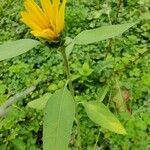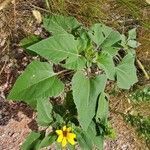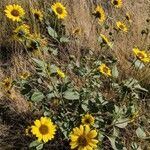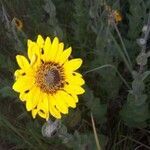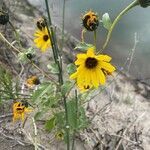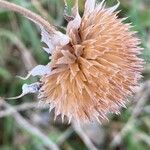Similar to H. annuus, but smaller, seldom over 1 m, with narrower, more often entire, rarely cordate lvs, which may be more densely hairy beneath, and with smaller heads, the disk 1–2.5 cm wide; invol bracts lanceolate or lance-ovate, tapering gradually to the tip, shortly scabrous-hispid, seldom at all ciliate or with any long hairs; central receptacular bracts conspicuously white-bearded at the tip; 2n=34. Prairies, plains, and waste places, especially in sandy soil; native mainly on the Great Plains and in sw. U.S., but occasionally eastward as a weed. June–Sept. Ours is var. petiolaris
An annual plant. It has a taproot. It grows 1.8 m tall. The leaves are more narrow than ordinary sunflower. The leaves are less than 10 cm wide.
